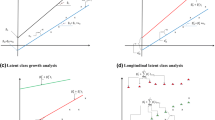Summary
This analysis of the relationship between longterm exposure to carcinogens and the risk of cancer relies upon a model which depicts exposure, burden and genetic damage as time series. It is shown that the dose of the carcinogen and the resulting damage to susceptible tissues can be related to cumulative exposure provided that linear kinetics are maintained and the exposure series remains stationary. Since saturable processes can lead to nonlinear behavior, the role of metabolism is investigated. It is argued that by maintaining the mean burden below 1/8 of the value of KM the contribution of nonlinear kinetics to the dose should be minimal, at least in occupational settings where saturable metabolism is most likely. Under this conjecture an expression is derived for the maximum mean air concentration, designated Xmax, which should maintain linear kinetics. By comparing values of Xmax, estimated for five genotoxic and/or carcinogenic substances (benzene, styrene, tetrachloroethylene, trichloroethylene, and vinyl chloride) with the corresponding U.S. occupational exposure limits, it is shown that saturable metabolism is unlikely to occur in some situations but is likely in others. This suggests that biological monitoring can play an important role in defining dose-response relationships for some, but not all, carcinogenic substances.
Similar content being viewed by others
References
ACGIH (1992) 1992–1993 Threshold limit values for chemical substances and physical agents and biological exposure indices. American Conference of Governmental Industrial Hygienists (Cincinnati, OH)
Andersen ME (1981) Saturable metabolism and its relationship to toxicity. CRC Crit Rev Toxicol 9:105–150
Andersen ME, Gargas ML, Jones RA Jenkins LJ (1980) Determination of the kinetic constants for metabolism of inhaled toxicants in vivo using gas uptake measurements. Toxicol Appl Pharmacol 51:100–116
Bailey MR, Fry F, James A (1982) The long-term clearance kinetics of insoluble particles from the human lung. Ann Occup Hyg 26:273–290
Bois FY, Paxman DG (1992) An analysis of exposure rate effects for benzene using a physiologically based pharmacokinetic model. Regal Toxicol Pharmacol 15:122–136.
Bolt HM, Filser JG, Buchter A (1981) Inhalation pharmacokinetics based upon gas uptake studies III. A pharmacokinetic assessment of ‘peak concentrations’ of vinyl chloride. Arch Toxicol 48:213–228
Ehrenberg L, Moustacchi E, Osterman-Golkar S (1983) Dosimetry of genotoxic agents and dose-response relationships of their effects. Mutat Res 123:122–182
Gargas ML, Andersen ME, Clewell HJ (1986) A physiologically based simulation approach for determining metabolic constants from gas uptake data. Toxicol Appl Pharmacol 86:341–352
Hullka BS, Wilcosky TC, Griffith JD (1990) Biological markers in epidemiology. Oxford University Press, New York Oxford
Kjellstrom T, and Nordberg GF (1978) A kinetic model of cadmium metabolism in the human being. Environ Res 16:248–269
Paxman DG, Rappaport SM (1990) Analysis of OSHA's short-term exposure limit for benzene. Regul Toxicol Pharmacol 11: 275–287
Poiger H, Schlatter C (1986) pharmacokinetics of 2,3,7,8-TCDD in man. Chemosphere 15:1489–94
Rappaport SM (1985) Smoothing of exposure variability at the receptor: Implications for health standards. Ann Occup Hyg 29:201–214
Rappaport SM (1991a) Assessment of long-term exposures to toxic substances in air. Ann Occup Hyg 35:61–121
Rappaport SM (1991b) Selection of the measures of exposure for epidemiology studies. Appl Occup Environ Hyg 6:448–457
Rappaport SM, Spear RC (1987) Physiological damping of exposure variability during brief periods. Ann Occup Hyg 32:21–33
Sato A, Nakajima T (1987) Pharmacokinetics of organic solvent vapors in relation to their toxicity. Scand J Work Environ Health 13:81–93
Swenberg J, Fedtke N, Fennel TR, Walker VE (1990) Relationship between carcinogen exposure, DNA adducts and carcinogenesis. In Clayson IC, Shubik P, Swenberg J (eds.) Progress in predictive toxicology. Elsevier Science Publishers B.V. (Biomedical Division), London, pp 161–184
Watanabe PG, McGowan GR, Madrid EO, Gehring PJ (1976) Fate of [14C] vinyl chloride following inhalation exposure in rats. Toxicol Appl Pharmacol 37:49–59
Author information
Authors and Affiliations
Rights and permissions
About this article
Cite this article
Rappaport, S.M. Biological considerations in assessing exposures to genotoxic and carcinogenic agents. Int. Arch Occup Environ Heath 65 (Suppl 1), S29–S35 (1993). https://doi.org/10.1007/BF00381304
Issue Date:
DOI: https://doi.org/10.1007/BF00381304




